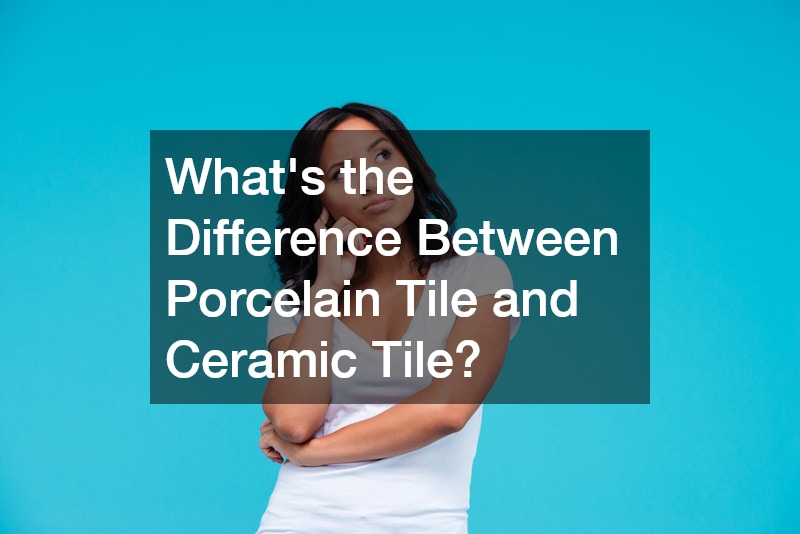Porcelain and ceramic tiles are both popular choices for flooring and wall applications in homes and commercial spaces. While they might appear similar at first glance, they have distinct characteristics, manufacturing processes, and applications that make each suitable for different environments. Understanding these differences can help homeowners, designers, and contractors choose the right tile for their project.
Composition and Manufacturing
The primary difference between porcelain and ceramic tiles lies in their composition and the way they are manufactured. Ceramic tiles are made from a mixture of clays and other natural materials, which are then molded into shapes and fired in a kiln at moderate temperatures.
This process results in tiles that are relatively soft, porous, and less dense.
Porcelain tiles, on the other hand, are made from a more refined clay, typically containing kaolin, quartz, and feldspar. These tiles are fired at higher temperatures than ceramic tiles, which leads to a denser and harder tile. The high firing temperature also makes porcelain tiles less porous and more impervious to moisture compared to ceramic tiles.
Durability and Use
Due to their denser structure, porcelain tiles are inherently more durable and resistant to wear and tear than ceramic tiles. They are less likely to crack and can withstand heavy foot traffic, making them ideal for both residential and commercial applications, particularly in high-traffic areas. Porcelain’s low porosity also makes it more resistant to moisture and frost, suitable for outdoor uses in climates with severe winters.
Ceramic tiles, while durable enough for light to moderate traffic areas, are best suited for interior walls and floors. They are a popular choice for residential bathrooms, kitchens, and hallways where conditions are controlled and less extreme.
Aesthetic Differences
Both porcelain and ceramic tiles are available in a vast array of colors, patterns, and sizes. However, porcelain tiles often mimic natural materials like stone, wood, and marble more realistically due to the higher definition printing techniques and the finer grain of clay used. Ceramic tiles tend to have a simpler, more handcrafted look with a wider variety of glazes and finishes, which can be appealing in decorative accents or less traffic-heavy areas.
Cost Considerations
Ceramic tiles are generally less expensive than porcelain tiles due to the lower cost of materials and less energy-intensive manufacturing processes. Homeowners on a budget may prefer ceramic for low-impact areas to reduce project costs while still achieving a desirable aesthetic.
Installation and Maintenance
Both types of tiles require similar installation techniques, but porcelain’s density makes it more challenging to cut and install, which can lead to higher installation costs. However, once installed, both types of tiles are relatively low maintenance. Porcelain’s moisture resistance makes it easier to care for in damp or outdoor environments. Regular cleaning for both types includes sweeping or vacuuming, with periodic wet mopping using a mild detergent.
Watch the video above to learn more about the difference between ceramic and porcelain tile!.


